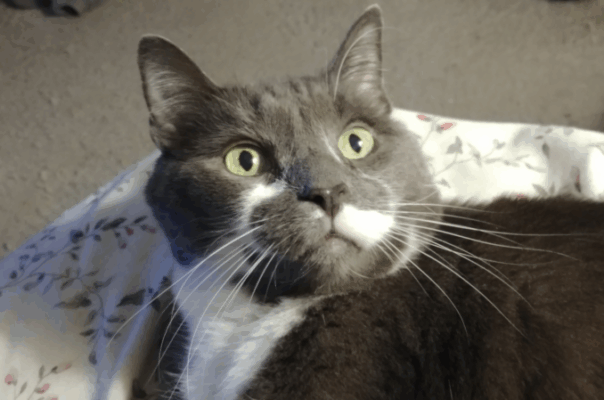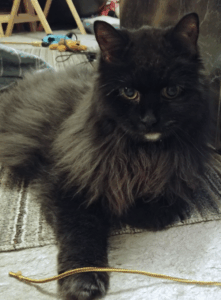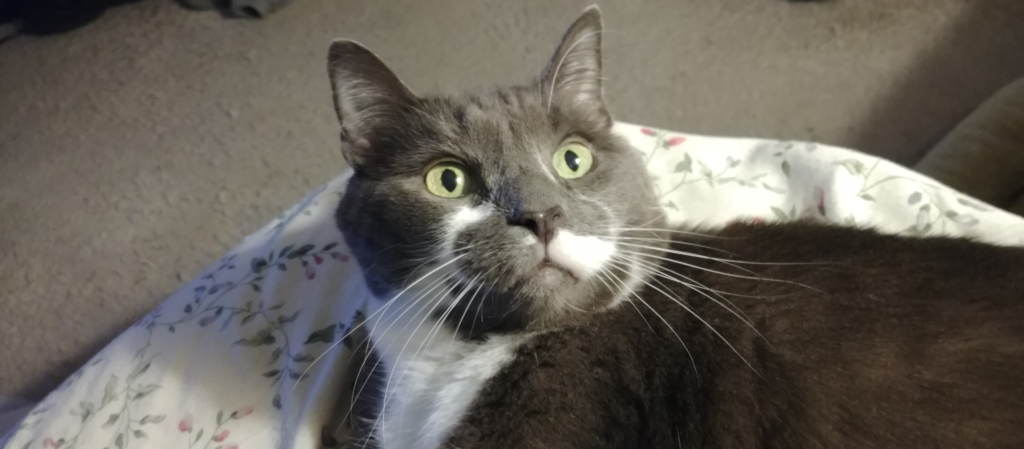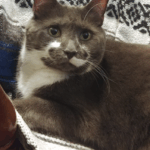 Cats are creatures of habit, and their feeding routine is a crucial aspect of their overall health and well-being. Many cat owners opt for the convenience of free feeding dry food, leaving kibble available throughout the day for their feline companions.
Cats are creatures of habit, and their feeding routine is a crucial aspect of their overall health and well-being. Many cat owners opt for the convenience of free feeding dry food, leaving kibble available throughout the day for their feline companions.
However, this approach may not be optimal for your cat’s health. Let’s explore the differences between free feeding dry food and scheduled wet food feedings, and why the latter might be the better choice for your cat.
The Problem with Free Feeding Dry Food
Free feeding occurs when cat owners fill a bowl with dry food and leave it out all day, allowing their cat to eat whenever and however much they want. While this method is convenient for busy pet owners, it presents several potential health issues:
-
Weight Management Issues
When food is constantly available, cats often eat more than they need. This grazing behavior can lead to overeating and weight gain. Obesity in cats is not merely a cosmetic concern—it’s associated with numerous health problems including diabetes, arthritis, heart disease, and a shortened lifespan.
Unlike wild cats who must hunt for their meals (burning calories in the process), domestic cats with unlimited access to food don’t need to exert energy to obtain their meals. This imbalance between calorie intake and energy expenditure contributes significantly to the increasing rates of obesity in domestic cats.
-
Nutritional Concerns with Dry Food
Dry cat food typically contains higher carbohydrate levels than wet food. Cats are obligate carnivores, meaning their bodies are designed to derive nutrition primarily from animal proteins and fats, not from carbohydrates. Their natural diet would contain very little carbohydrate content.
The high carbohydrate content in many dry foods (often 30-40% or more) can be problematic for cats. Their bodies aren’t designed to process large amounts of carbohydrates, which can lead to:
-
-
- Blood sugar fluctuations
- Increased risk of feline diabetes
- Digestive issues
- Less protein intake than optimal
-
Additionally, dry food contains significantly less moisture than wet food or a cat’s natural prey. This lower moisture content can contribute to chronic mild dehydration, which may lead to urinary tract problems and kidney disease over time. This was kind of what happened with our cat Belle. She was always on wet food when she was with us but both Belle and Paws were fed dry food their life before us and Belle exhibited the symptoms described here.
-
The Myth of Tarter Control
Despite what you may have been told or heard, dry food doesn’t remove tarter from your cat’s teeth. In fact, as we found out through our own experience and research, the dry food actually contributes to your cat’s tarter. We’d also add that we question actual “Tarter Control” additives for cat food. We’ve never found this to be true.
The Benefits of Scheduled Wet Food Feedings
Transitioning to scheduled feedings with wet food offers numerous benefits for both cats and their owners:
Nutritional Advantages of Wet Food
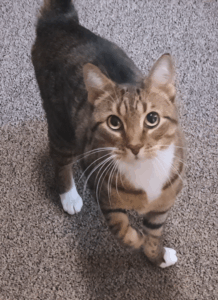 Wet cat food typically contains:
Wet cat food typically contains:
-
- Higher protein content (closer to a cat’s natural diet)
- Lower carbohydrate levels
- Significantly more moisture (70-80% vs. 10% in dry food)
- Often fewer preservatives and processing agents
This nutritional profile more closely resembles what cats would eat in the wild and supports their biological needs. The higher moisture content is particularly beneficial for urinary tract health and kidney function, as cats naturally have a low thirst drive and often don’t drink enough water to compensate for dry food’s lack of moisture.
-
Better Weight Control
With scheduled feedings, you can precisely monitor how much your cat eats, making it easier to maintain a healthy weight. You can adjust portions based on your individual cat’s needs, activity level, and metabolism.
Scheduled feeding times also mimic the natural hunting pattern of cats, who in the wild would catch several small meals throughout the day rather than grazing continuously.
-
Increased Engagement
Perhaps one of the most overlooked benefits of scheduled feedings is the positive impact on your cat’s behavior and your relationship. Cats who free feed often become disengaged from their owners in relation to food—the food is always there, so there’s no need to interact.
With scheduled feedings, cats quickly learn to associate you with meal times. This creates routine and structure, which cats naturally crave. Many cat owners report that their previously aloof cats become more engaged, affectionate, and interactive after switching to scheduled feedings. It’s certainly the case for our household.
Making the Transition to Scheduled Wet Food
The Cold Turkey Approach
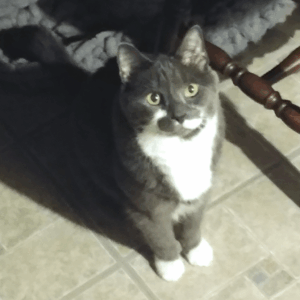 When transitioning from free feeding dry food to scheduled wet food feedings, a “cold turkey” approach is often most effective. While gradual transitions work well for changing food brands or formulas, when changing the feeding schedule itself, a clean break tends to work better.
When transitioning from free feeding dry food to scheduled wet food feedings, a “cold turkey” approach is often most effective. While gradual transitions work well for changing food brands or formulas, when changing the feeding schedule itself, a clean break tends to work better.
Here’s why:
- Cats are exceptionally good at training their humans. If you leave even a small amount of dry food available while introducing scheduled wet feedings, many cats will simply wait for the dry food to be refilled rather than accepting the new routine.
- Cats understand clear boundaries better than partial changes. When the rules are clear and consistent, they adapt more quickly.
- A complete switch avoids confusion about when and what food will be available.
That said, the transition may still take some patience. Most cats adjust to the new schedule within a week, though some may take longer.
Practical Tips for the Working Cat Owner
One common concern about scheduled feedings is how to manage them with a full-time work schedule. Here’s a practical approach:
- Morning feeding: Feed your cat before you leave for work. This gives them a nutritious start to the day.
- Evening feeding: Provide another meal when you return home. Most adult cats do fine with two meals per day, approximately 12 hours apart.
- Automatic feeders: For those with particularly demanding schedules, timed automatic feeders designed for wet food can help maintain consistency.
- Water access: Always ensure your cat has access to fresh, clean water throughout the day.
Remember that healthy adult cats can easily go 8-12 hours between meals without any health issues, as long as they have access to fresh water. While they may try to convince you otherwise with dramatic displays of “starvation,” this is typically just a reaction to the schedule change rather than actual hunger.
Special Considerations
Managing Multiple Cats at Feeding Time
One of the most challenging aspects of scheduled feeding comes into play when you have multiple cats. The ideal scenario—where each cat eats only from their own bowl and respects others’ food—often doesn’t match reality. Here are some common challenges and solutions:
Territorial and Hierarchical Behaviors
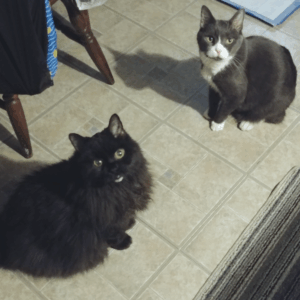 Cats naturally establish hierarchies, and this social structure becomes particularly evident during feeding times. You might observe:
Cats naturally establish hierarchies, and this social structure becomes particularly evident during feeding times. You might observe:
- Dominant cats pushing others away from food
- Food stealing between cats
- Some cats eating quickly to raid others’ bowls
- Former feral or street cats displaying intense food guarding or stealing behaviors
These behaviors stem from instinctive survival mechanisms. For rescue cats, especially those with a feral background, food competition was likely a daily reality. The “first come, first served” mentality and the drive to secure as much food as possible are deeply ingrained behaviors that helped them survive.
Effective Feeding Separation Strategies
To ensure each cat gets proper nutrition:
- Physical separation: The most reliable method is feeding cats in different rooms with doors closed, or using baby gates for temporary divisions.
- Vertical spaces: Utilize cat trees, shelves, or counters for feeding shy or subordinate cats where dominant cats can’t reach.
- Supervised feedings: Stay present during meal times to prevent food stealing and ensure each cat finishes their portion.
- Microchip feeders: These specialized feeders only open for the cat wearing the corresponding microchip or collar tag, preventing other cats from accessing the food.
- Slow feeder bowls: For cats who eat too quickly and then steal others’ food, slow feeder bowls with ridges or puzzles make eating more challenging and time-consuming. This not only prevents the quick eater from finishing early and bothering other cats, but also aids digestion and provides mental stimulation.
Remember that these food-related behaviors rarely resolve on their own and typically require consistent management. Some cats may never fully respect food boundaries, making separation at meal times a permanent necessity in multi-cat households.
Prescription Diets
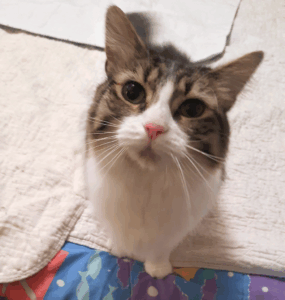 Some cats require prescription diets for specific health conditions. While these diets are sometimes more readily available in dry form, wet alternatives are becoming increasingly common. For conditions like:
Some cats require prescription diets for specific health conditions. While these diets are sometimes more readily available in dry form, wet alternatives are becoming increasingly common. For conditions like:
- Urinary tract health (where moisture is particularly beneficial)
- Diabetes (where lower carbohydrate content is crucial)
- Kidney disease (where phosphorus levels and moisture content matter)
Wet prescription options often exist, though they may require ordering from your veterinarian or specialty pet suppliers if not available locally.
Lifestyle Considerations
Not every living situation is conducive to scheduled feedings. Factors that might make scheduled feedings challenging include:
- Very irregular work schedules
- Frequent travel
- Cats with specific medical conditions requiring constant food access
In these cases, modified approaches like timed feeders, microchip-activated feeders (for multi-cat households), or a combination of limited dry food and scheduled wet feedings might be appropriate.
Conclusion
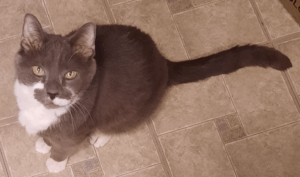 While free feeding dry food may seem convenient, scheduled wet food feedings offer significant health and behavioral benefits for most cats. The higher protein content, increased moisture, and controlled portions in wet food support your cat’s natural nutritional needs, while the scheduled aspect creates routine and strengthens your bond.
While free feeding dry food may seem convenient, scheduled wet food feedings offer significant health and behavioral benefits for most cats. The higher protein content, increased moisture, and controlled portions in wet food support your cat’s natural nutritional needs, while the scheduled aspect creates routine and strengthens your bond.
The transition may require patience and consistency, but the long-term health benefits—including better weight management, reduced risk of diabetes and urinary issues, and a more engaged, interactive cat—make it well worth considering.
Remember that every cat is an individual, and what works best may vary. Consulting with your veterinarian about your specific cat’s needs is always recommended when making changes to their diet or feeding schedule.


